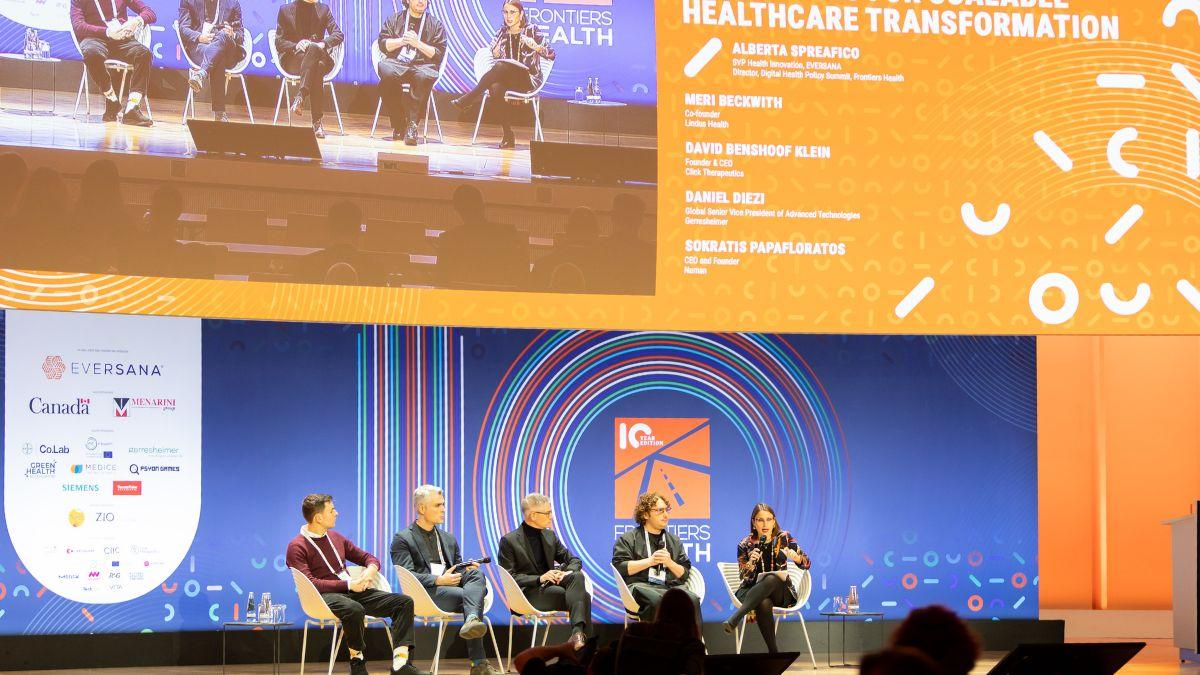Power of digital technology and partnership to accelerate delivery of new medicines to patients

We are living through the fastest period of digital growth in human history. New technologies are transforming how we live, work, connect and innovate. In the pharmaceutical industry, digital tools have the potential to accelerate science and transform how we design, develop, and deliver new medicines for the most serious and complex diseases facing humanity. They can help us create more precise treatments, diagnose disease earlier and monitor patients more closely. Most importantly, these advances are helping us improve patients’ experiences and outcomes and shifting our focus from “sick-care” to “health-care”.
From familiar tools like health apps and biometrics trackers, to big data analytics and artificial intelligence (AI), new digital technologies are making headlines for a reason. Their rapid adoption is revolutionising many aspects of our lives, including our healthcare.
Challenges and breakthroughs
As pharmaceutical companies and providers seek to unlock the full potential of digital tools, there remain many challenges in addressing unmet needs for patients and caregivers. In today’s healthcare model, for example, patients are often diagnosed later in the course of their disease, when it’s harder to achieve remission or potential for cure.1 Within R&D, clinical trials are often expensive, slow, and inefficient.2 This is largely due to the significant burden patients experience in the assessment stage, such as lengthy in-clinic visits, which in turn delays recruitment and can lead to participants dropping out.
We have made progress with some of these challenges and are on the verge of more breakthroughs. Our ability to streamline the experiences of patients in clinical trials has improved vastly. Patients can now complete more trial steps from home, reducing the burden of recurring travel and hospital visits. We can now conduct digital health monitoring from a distance, which holds great potential to better track our health and that of our loved ones.
Digital solutions are allowing spirometry at home, helping doctors to measure lung activity with telehealth, and not requiring patients to travel to their location for diagnosis or for monitoring. We are making rapid progress with these new tools, but we must work together to solve even more unmet needs, listening to patients, caregivers, trial investigators, and other organisations to ensure we optimise the technology for all users.
Reducing complexity and improving the potential of new tools
One current challenge for the life sciences and healthcare sector is the complexity of integrating the different digital solutions into easy-to-use tools that make for an enjoyable experience. Emerging technology is often either scientifically powerful, but difficult to use, or user-friendly, but scientifically weak.
As new digital solutions are developed and incorporated into clinical trials and patient care, they become increasingly complex for researchers, caregivers, regulators, and patients to use. We know these groups don’t want to navigate myriad tech solutions from every pharmaceutical company, including the complexity of managing multiple solutions with different log-ins and look and feel. They want a seamless, simple, whole-person experience across their healthcare journey. We see an opportunity to work across the industry, reducing complexity and realizing the full potential of new tools.
In a recent article published in Nature Medicine, we spoke to 322 patients, caregivers, and trial investigators from nine countries to understand how to streamline their participation in trials and improve their experience using digital tools.3 After reviewing 91 trial protocols across oncology, respiratory, and cardiovascular disease, we found that digital solutions can enable a shift away from the traditional physical site-based trial model, reduce the burden on both patients and trial sites and enable more continuous data collection, new endpoints and more innovative trial designs.3
The experience provided two important learnings. First, digital solutions must be implemented in a single end-to-end experience for the user to reduce complications. For this reason, we integrated the experience of multiple needs into one patient app, and one portal with a single sign-in for the hospital or site. Second, the use of digital tools must be discussed early on in the study design stage to ensure a streamlined approach, rather than designing the study in a traditional way with all the physical visits and adding digital on the top of that.
Collaborative efforts for uptake of novel endpoints
Digital endpoints can encompass data gathered outside of the typical trial settings by devices like wearable sensors. Instead of requiring patients to visit a clinic or hospital for measurement, these data points, which could include heart rate, lung capacity, and much more, can be collected from home on an ongoing basis. This could offer a more complete picture of a patient’s health for researchers and clinicians, create opportunities to design more effective trials, cut research costs, allow for earlier diagnoses, and more. But we must address several challenges for this to become a reality. Industry uptake of these novel endpoints has been slow, as of course it requires regulatory validation; however, industry could work together to accelerate the evidence and move the industry forward.
From our research, we know that scientists and engineers must keep the user experience in mind when developing and incorporating new technology. But it goes beyond the end-user. Bringing new technologies to more people, delivering meaningful change at scale, and realising their full potential requires working in close partnership with industry, academia, advocacy groups and regulators. Collaboration will be essential to our success as an industry.
As the age of digital transformation continues, we have the potential to transform how we develop and distribute new medicines – all the way from the lab to patient care. We must put scientific rigor and usability at the heart of our approach to ensure that new technologies go beyond simply digitising existing processes to result in improved experiences and outcomes for patients.
By working together as an industry, we can propel digital health forward.
- World Health Organization. Early cancer diagnosis saves lives, cuts treatment costs [press release]. https://www.who.int/news/item/03-02-2017-early-cancer-diagnosis-saves-lives-cuts-treatment-costs. Published February 3, 2017. Accessed January 29, 2024.
- Djurisic S, Rath A, Gaber S, et al. Barriers to the conduct of randomised clinical trials within all disease areas. Trials. 2017;18(1):360.
- Durán CO, Bonam M, Björk E, et al. Implementation of digital health technology in clinical trials: the 6R framework. Nature Medicine. 2023;29:2693:2697.












